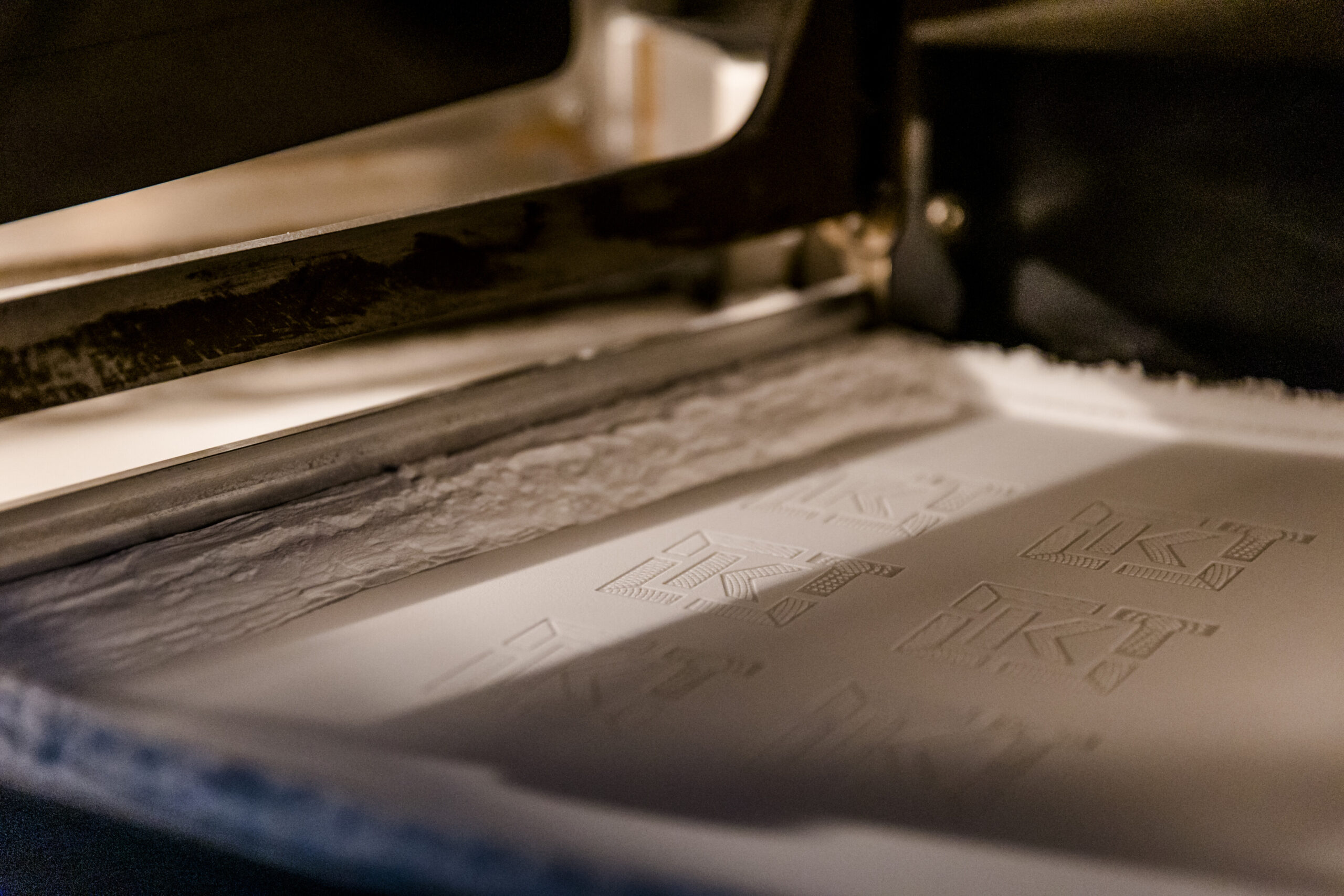Additive Manufacturing

Additive manufacturing with polymers has established itself as a key technology in modern production and enables the fast, cost-efficient production of complex geometries. The layer-by-layer build-up allows for the realization of geometries that are difficult or even impossible to achieve with conventional methods like injection molding or milling. This opens up new possibilities, particularly in industries such as medical technology, aerospace, and the automotive industry, for customization and functional integration. At the same time, additive manufacturing allows for rapid prototyping and flexible adaptation to design changes, significantly shortening development cycles.
The LKT is equipped with several commercial SLS systems as well as specialized systems with adaptable equipment and parameterization for powder-based additive manufacturing. Additionally, multiple SLA and DLP systems are available, along with two systems from Carbon, located in the joint collaboration center at the LKT. For extrusion-based additive manufacturing, several desktop systems are in operation, supplemented by equipment designed for filled material systems. A manufacturing cell featuring a dual-robot system enables the production of complex, functionalized components using strand-based additive manufacturing. The dual-robot system is also available to industrial partners as part of collaborative research projects and contract manufacturing.
- SLS System (self-construction | SFB 814)
- SLS System (Fa. EOS GmbH | Typ: Formiga P110)
- SLS System (Fa. EOS GmbH | Typ: Formiga P396)
- SLS System (Fa. EOS GmbH | Typ: Formiga FDR)
- SLS System (Fa. Sintratec AG | Typ: Sintratec KIT)
- SLS System (Fa. Sinterit GmbH | Typ: Sinterit Lisa)
- Powder application system (self-construction)
- DLP System (Fa. Carbon, Inc. | Typ: Carbon M2)
- DLP System (Fa. Carbon, Inc. | Typ: Carbon L1)
- DLP System (Fa. Anycubic | Typ: LCD-DLP Anlage Anycubic Photo Mono)
- DLP System (Fa. Flashforge | Typ: Flashforge Hunter)
- Stereolithography System(Fa. Formlabs | Typ: Formlabs Form 2)
- Stereolithography System(Fa. Anycubic | Typ: Phrozen Sonic 12K)
- UV-based printing system (Eigenbau)
- UV-based hardening station (Fa. Intamsys Technology Co. Ltd.)
- Gel Dispensing Printing (Fa. Massivit3D Printing Technolohgies Ltd. | Typ: Massivit 1800)
- Freeformer (Fa. Arburg GmbH + Co KG | Typ: Arburg Freeformer)
- Dual-robot system(Fa. Fill GmbH | Typ: Sonderbau)
- Granulate-based 3D-Printer(Fa. AIM3D GmbH | Typ: ExAM 255)
- FFF-Printer(Fa. Ultimaker | Typ: 2+)
- FFF-Printer(Fa. Ultimaker | Typ: S3)
- FFF-Printer(Fa. Ultimaker | Typ: S3 extended)
- FFF-Printer(Fa. Ultimaker | Typ: S5)
- FFF-Printer(Fa. Ultimaker | Typ: S7 Pro Bundle)
- FFF-Printer(Fa. Intamsys Technology Co. Ltd. | Typ: Intamsys Funmat HT)
- FFF-Printer(Fa. Markforged | Typ: Markforget Mark Two)
- Filament extruder (Fa. 3devo B.V. | Typ: Composer 350° Filament Maker)
Our research focuses primarily on the following areas:
- Integration of metal inserts in the extrusion-based Additive Manufacturing
- Integration of the subtractive post-processing of additively manufactured components for the generation of functional surfaces
- Embedded Additive Manufacturing with silicone
- Large Scale Additive Manufacturing
The dual-robot system is funded by the German Research Foundation (DFG), projekt number 401501386.
- Determination of component porosity (self-construction)
- Thermography (Fa. IRCAM GmbH | Typ: IRCAM Velox 1310k SM)
- Topography (Fa. Carl Zeiss AG | Typ: Zeiss Comet L3D 2)
